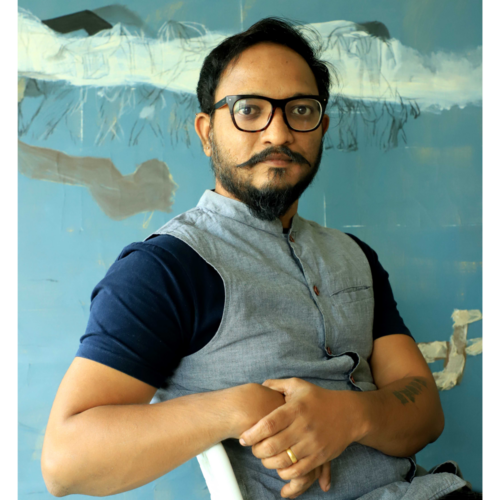An Indian contemporary artist chronicles an anti-caste freedom movement inspired by the Bay Area’s Black Panther Party.
Filled with a revolutionary spirit, Vikrant Bhise’s Archival Historicity series offers a dynamic visual archive of the Dalit Panthers, a group dedicated to seeking freedom from caste, gender, and labor inequities for India’s most oppressed and marginalized peoples. Founded in 1972 in Mumbai and taking inspiration from the Oakland-based Black Panther Party for Self Defense, the Dalit Panthers sought to align themselves with their Bay Area counterparts in a global struggle for equality and social change.
Bhise’s intimate, postcard-sized works are made up of many layers: painted and printed elements from manifestos and pamphlets interact and overlap with newspaper images, urban monuments, and symbolic cartoons. Installed in a continuous sequence spanning a gallery wall, these selections from the ongoing series “evoke the small, localized experiences that add up to global movements, while underscoring the enduring significance of the Panthers’ call for equality,” says Padma Dorje Maitland, Malavalli Family Foundation Associate Curator of the Art of the Indian Subcontinent. This exhibition marks their first showing in a major museum.

Vikrant Bhise is a visual artist who lives and works in Mumbai, India. Foregrounding the struggle against caste-based domination and its implications on land, liberty and labor, Bhise’s artistic practice reflects his commitment to the expression of social justice, the realization of enduring reform through activism, and the remembrance of resistance to caste, class, and gender-based oppression. Scholar and Harvard professor Surai Yengde writes: “The works of Vikrant Bhise are connected by the hope for justice and equality that they express.”